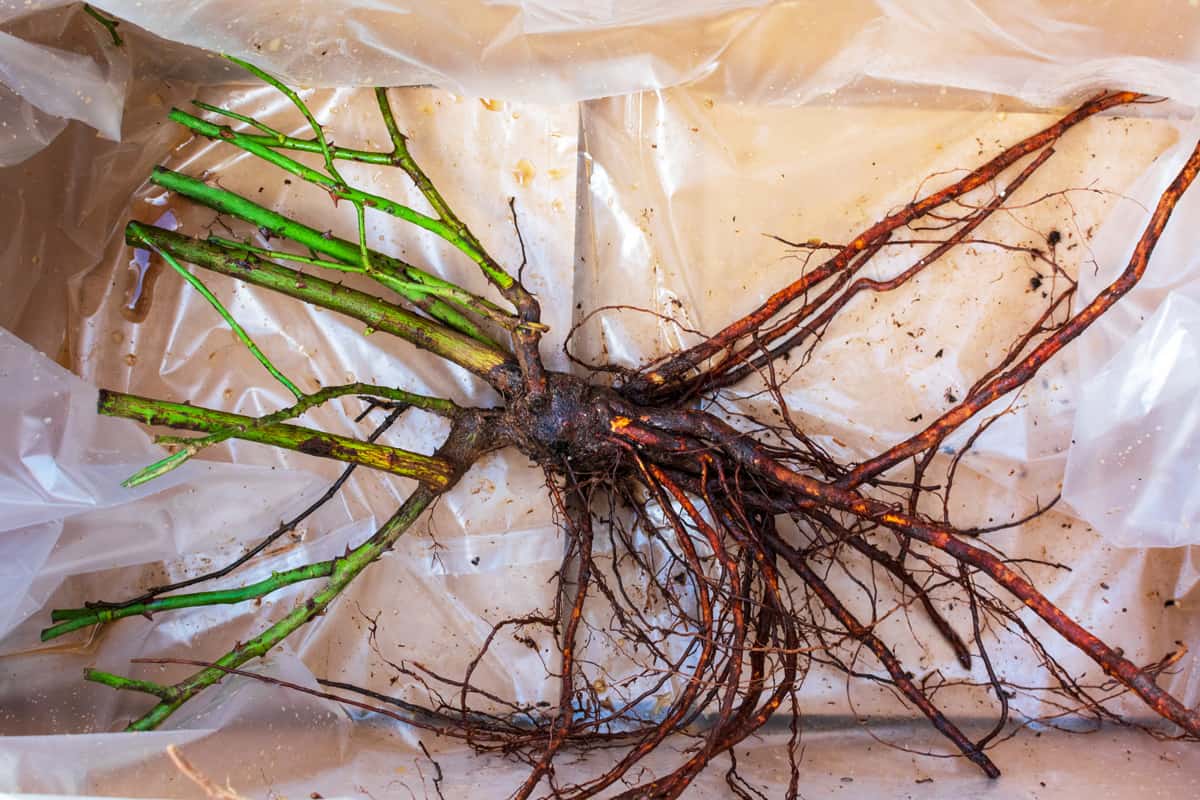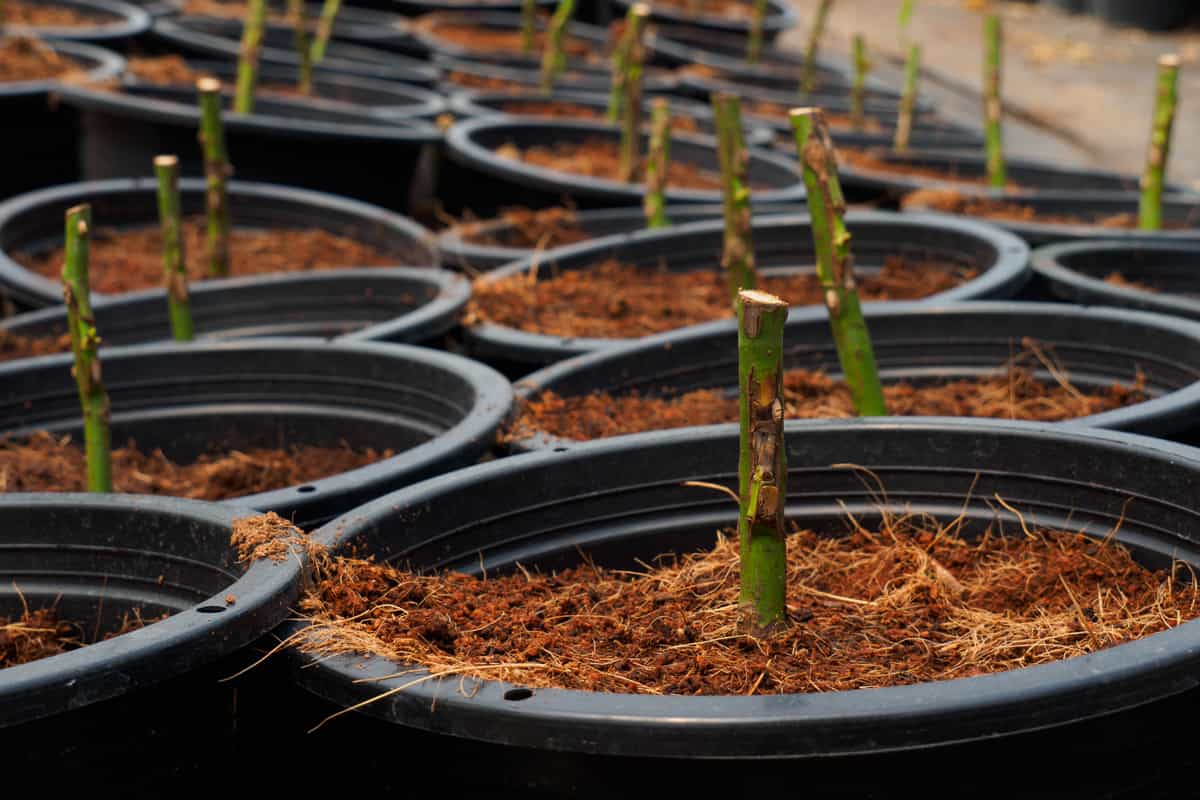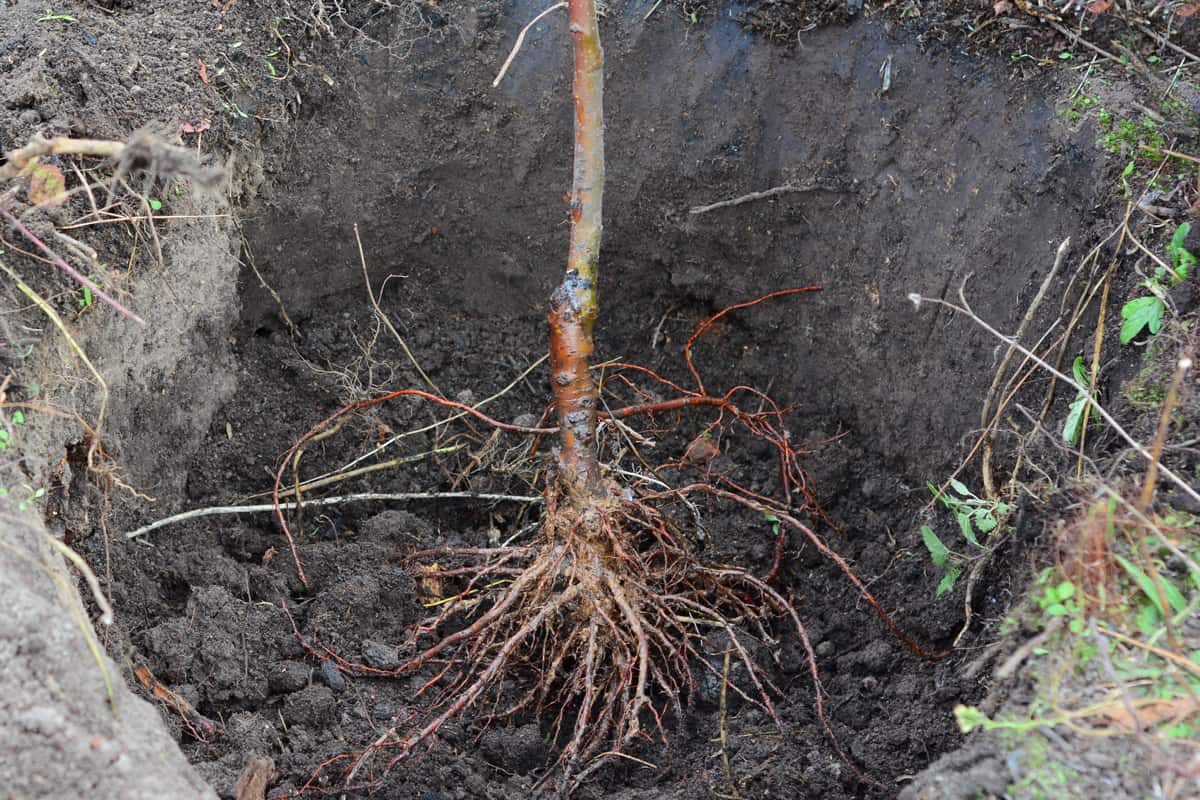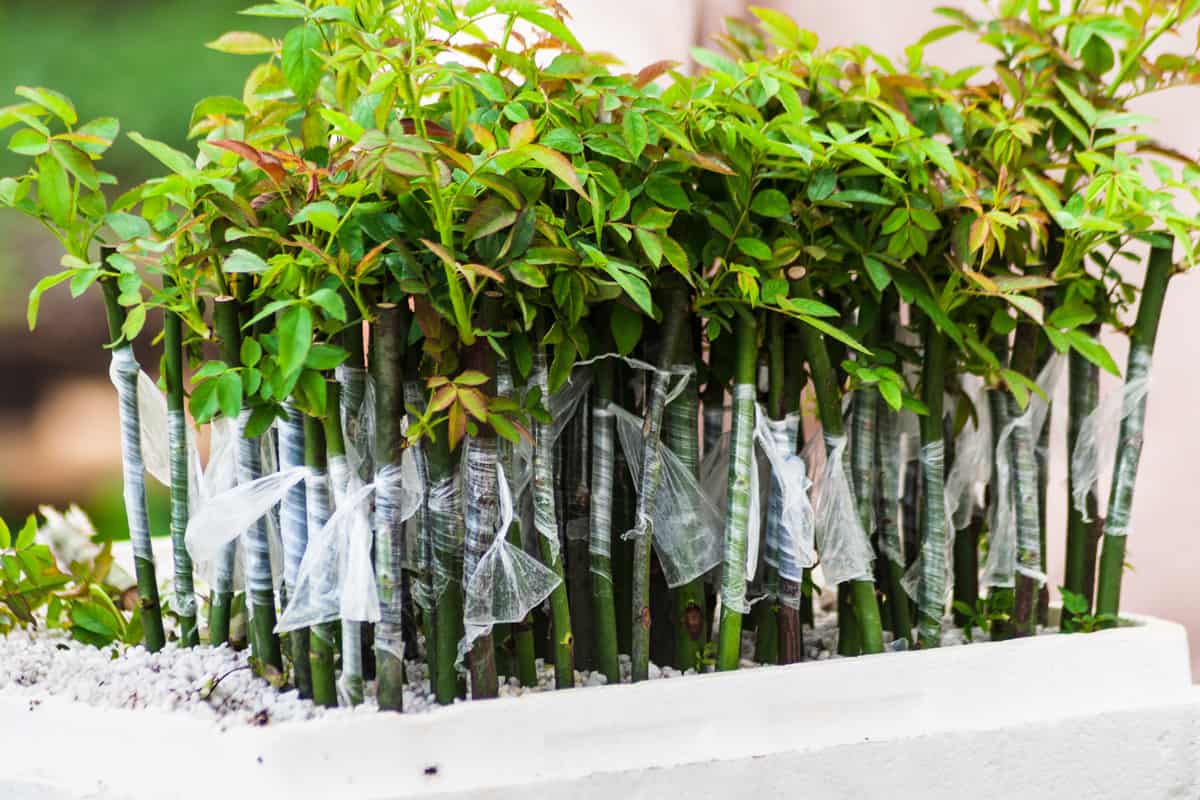Roses are one of the most well-known and coveted flowers. Most people adore them and give them as a sign of affection to their loved ones. There are many types of roses, and you may wonder if the bare-root ones can be grafted or not. We did our research, and here's what we've found out.
To satisfy your curiosity, yes, you can graft a bare-root rose.
Bare-root is a word used for a rose without soil on its roots. You must do it during the rose's winter hibernation, where the plant is effectively inactive.
Now that you know that you can also graft bare-root roses, let's elaborate more on that fact. Let's dive more into the world of rose grafting and bare-root roses. We've also included essential tools for rose grafting.

What Are Bare-Root Roses, And Are they Grafted?

You can refer to roses provided without soil surrounding their roots and in their inactive form, bare-root roses. One can usually obtain bare-root roses during their hibernation without buds, leafage, or soil.
You can have a grafted bare-root rose or an own-root rose. Bare-root roses are actually sometimes called "budded bare-root roses." Grafted bare roots have roots taken from various roses different than the sprout.
The sprouts will then develop into your selected rose. And the root part will have grown resilience and protection against infections and particular weather conditions since the grafted rose's root is usually around two years old. So they'll quickly settle in your garden after planting.
What Is The Purpose Of Grafting Roses?

Grafting is a form of "breeding" where a rose's sprout merges with another rose's roots. The grafted root part is more robust, can handle more pressure, and is more disease-resistant. You can also use grafting to create a rose bush with different-colored flowers.
All About Bare-Root Roses

Let's get to know more about bare-root roses.
When Is The Perfect Time To Plant Bare-Root Roses?
It depends on your plant's hardiness zone, but the perfect time to plant bare-root roses is from October to April. That gives them time to adjust and be ready to bloom in summer. A piece of advice is not to plant on frozen ground and in drought conditions.
How Long Will Bare-Root Roses Last Before Planting?
A bare-root rose can last from two to three weeks in its original package or case. For a longer life, store it in a cool place or apply damp paper to its roots to avoid drying out.
How Deep Do You Plant Bare-Root Roses?
Using a spade, dig a hole sufficient for the rose's roots. The size should be around 16-inches deep and 16-inches wide [40x40 cm].
How Often Do You Water Bare-Root Roses?
For newly grown roses, you need to water them every two to three days. And for already-grown roses, you need to water them once or twice weekly.
Do Bare-Root Roses Bloom The First Year?
Bare-root roses are slower to produce flowers than roses grown in containers. But they can blossom in their first year, although it's just around a floret or two. It usually takes two to three years for them to have generous blossoms.
How Long Does It Take For Bare-Root Rose To Bloom?
Bare-root roses can bloom in two to three months as soon as the soil is viable in springtime.
Should You Soak Bare-Root Roses Before Planting?
It's recommended to soak bare-root roses in a container of water for between 8 to 12 hours to hydrate their roots. Next, prune off the damaged and diseased roots.
Can You Soak Bare-Root Roses Too Long?
It's perfectly safe to leave bare-root roses in water for a day up to six days, just as long as the top parts are out of the water. Soaking them will ensure the rehydration of the roses and help them thrive back in the garden.
Why Are My Bare-Root Roses Not Growing?
There are several reasons why your bare-root roses are not growing. These could be because of the following:
- Herbicides
- Improper fertilization
- Inappropriate storing or transport
- Lack of water or moisture
- Plant infections
- Soil pH issues
- Vulnerability to low temperatures
How Do You Preserve Bare-Root Roses?
Bare-root roses are often refrigerated until shipping. So before transplanting the roses, soak their roots or the whole plant in water for a day or more. Soaking rehydrates the roses after a long time in the freezer.
Can Bare-Root Roses Be Planted In Pots?
Bare-root roses are perfect for germinating in pots. Just pick a big enough vessel with an excellent draining system.
All About Rose Grafting

Now, let's talk about rose grafting.
Why Is Grafting Necessary For Roses?
Grafting has many benefits for roses. Grafted roses are more consistent in their growth than roses grown through seeds. These roses also blossom earlier and well.
Are Standard Roses Grafted?
Yes, standard or stem roses are propagated. Several rose variations are grafted to create a standard rose. Standard roses are usually towering plants with lengthy limbs and bright, intricate blooms.
Is Grafted Rose Better?
Grafted roses are better since they only take 18 months to grow and create a blossoming plant than the three years with own-root roses. These roses are also more affordable than the usual ones.
Which Month Is Best For Rose Grafting?
Mid-summer bloom cycle or in August is the perfect time to graft your roses since the fluid inside the plants is coursing. During this time, the chances are greater that the graft will be successful and the fresh rose will flourish.
Can You Graft Store-Bought Roses?
Yes, you can graft roses from a florist's bouquet, a store-bought one, or cut roses. With the proper circumstances, several propagated roses will grow roots in a month or more after being put in water.
Are Own-Root Roses Better Than Grafted Ones?
Own root roses are better than grafted ones. These roses can thrive for 50 years or more, while grafted roses usually do not live beyond 15 years. Own root roses take more time to get designated, but they grow firmer, can handle tension better, and are a more nourishing plant overall.
Grafting In Simple Steps
Below are the six simple steps in grafting.
- Pick the plant's dormant season, which is the perfect time for grafting.
- Ready the scion by pruning its bottom end around two inches.
- Connect the scion and rootstock via the scion's cut end and the rootstock's four flaps.
- Ensure the graft's safety by using a rubber band or grafting tape.
- Shield the graft by wrapping it with aluminum foil and plastic.
- Fasten the plastic with masking tape
Essential Tools For Grafting Roses
When grafting roses, you will need several things. Below are five tools that are essential for grafting roses.
PUELDU Double Blades Grafting/Gardening Knife
The Pueldu double-bladed knife is one of Amazon's Choices for Grafting Knives. You can use it not only for grafting but also for numerous things, such as vegetable picking.
Key Features:
- Made of durable stainless steel
- Equipped with a curved and straight blade and bark lifter
- Easy to carry foldable knife
Click here to see this grafting knife on Amazon.
NAYE Stretchable Grafting Tape for Flowers And Fruit Trees
The Naye stretchable tape is one of Amazon's Choices for Grafting Tape. It's compatible with various trees and plants and has a high success grafting rate.
Key Features:
- Flexible and stretchable grafting tape
- It comes in three different colors and sizes
- Used for grafting and budding
Click here to see this grafting tape on Amazon.
Bonide Tree Pruning Sealer with Brush Top Applicator
The Bonide Tree sealer is one of Amazon's Choices for Pruning Sealers. It has a breathable dressing that helps protect damaged or pruned plants.
Key Features:
- Fast and effective protective seal
- It prevents insect attacks and plant diseases
- It can be used for waterproofing
Click here to see this pruning sealer on Amazon.
Miracle-Gro Perlite
The Miracle-Gro Perlite is enriched with plant food and helps grow more beautiful flowers and plants. It's best used for container plants.
Key Features:
- It helps prevent root and soil compaction
- It promotes strong and healthy root development
- It improves drainage and aeration in potting mixes
Click here to see this perlite on Amazon.
NoCry Cut Resistant Gloves
The NoCry gloves are one of the Best Sellers for Cut Resistant Gloves. These gloves are perfect for grafting or pruning roses or plants thanks to their cut-resistant fabric.
Key Features:
- It's 4x more durable than leather
- Ambidextrous gloves
- Snug and comfortable fit
Click here to see these gloves on Amazon.
LCDCM Portable Fruit Tree Grafting Machine
The LCDCM grafting machine is one of Amazon's Choices for Grafting Shears. It's perfect for various plants and fruit trees.
Key Features:
- It's made of high carbon steel sharp cutting blade
- It's easy to use and perfectly trims
- Helps improve the survival rate of branches
Click here to see this grafting machine on Amazon.
Grafted Bare-Root Roses
After learning about bare-root roses and grafting, roses remain among the best. Now, wouldn't it be fun to try grafting roses yourself? If so, remember to choose the perfect time, roots, and buds, and get the essential grafting tool, and you're all set. Happy grafting!
If you are fond of roses and want to know more about them, you can check out these great posts:






